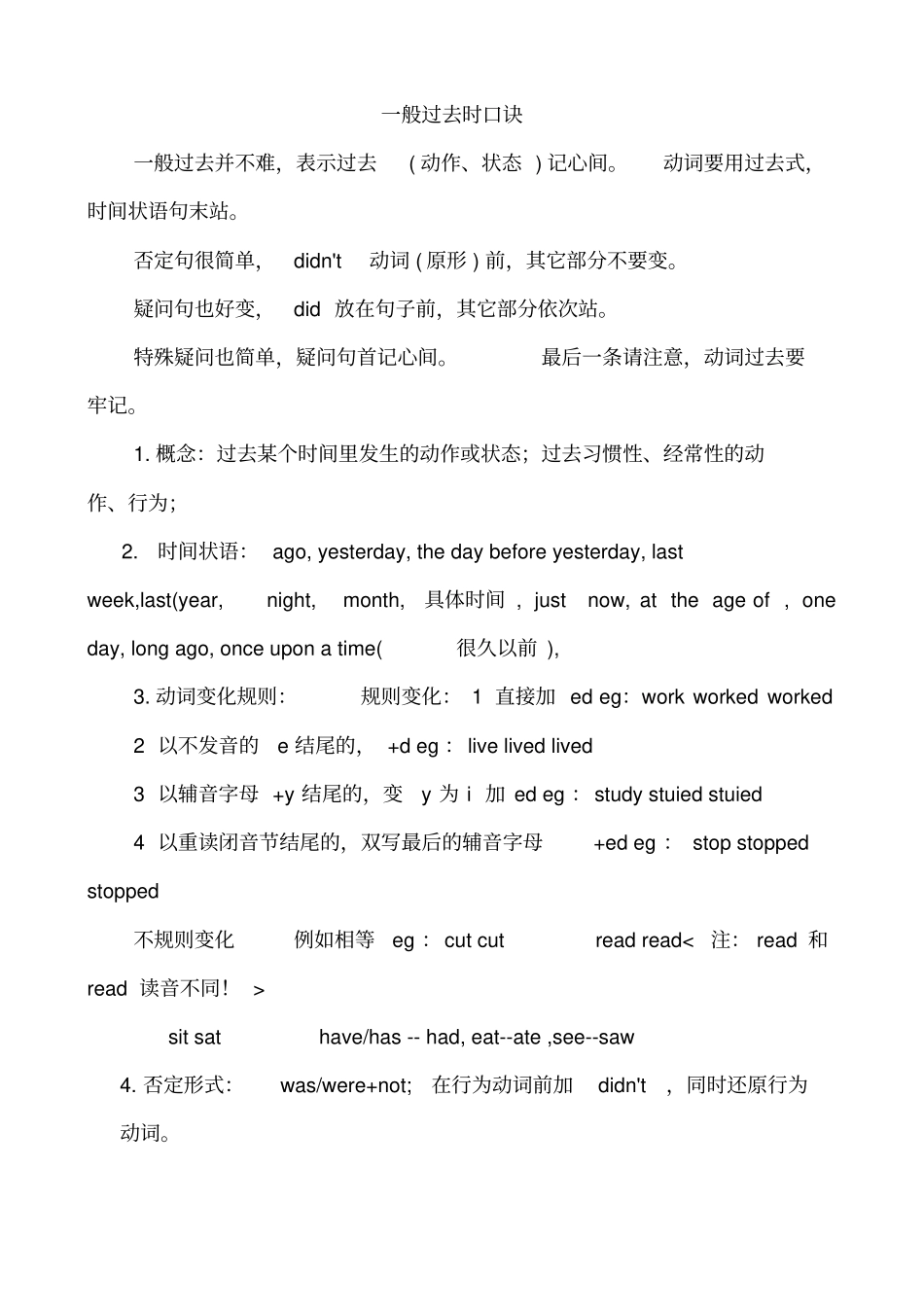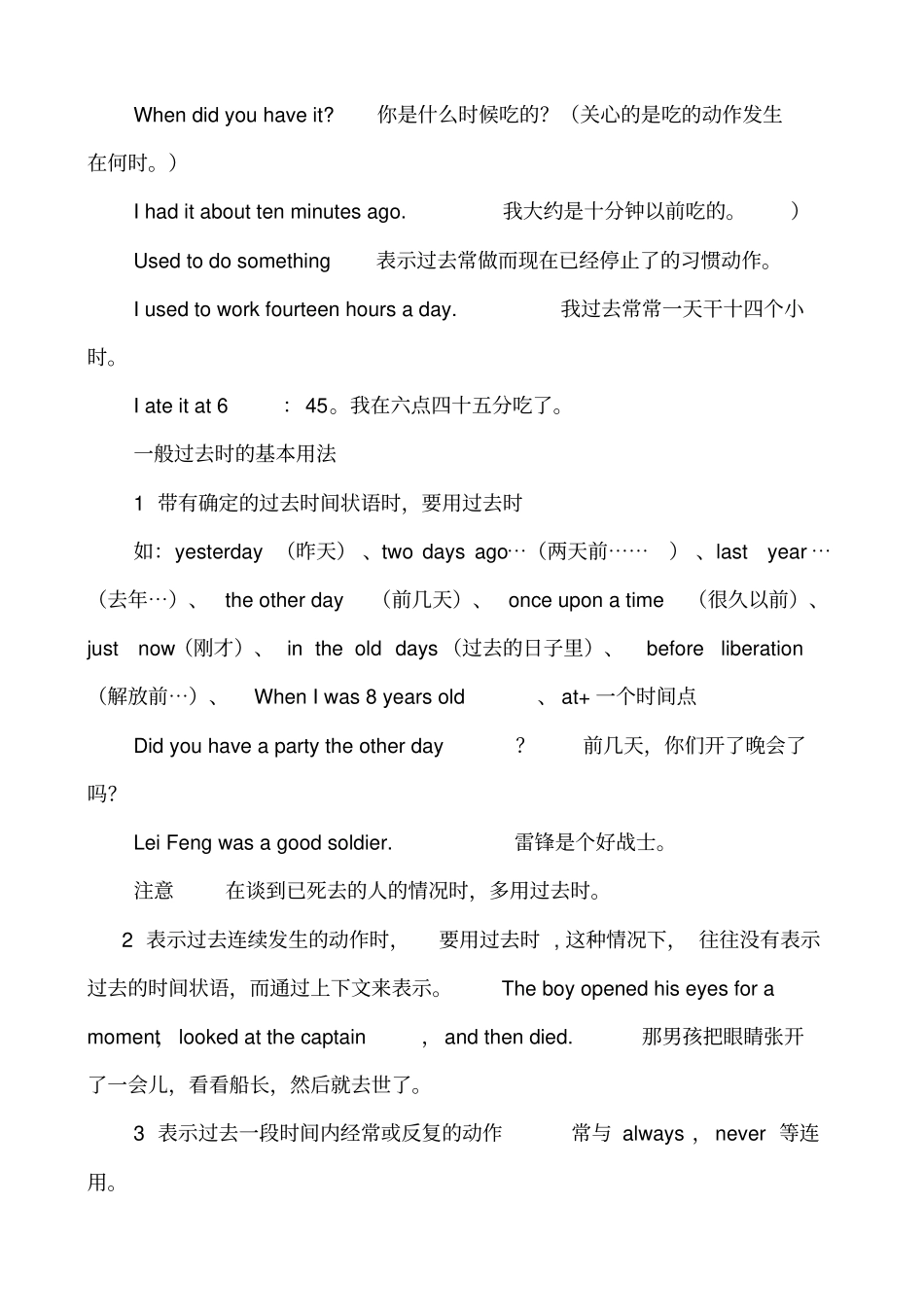一般过去时口诀一般过去并不难,表示过去( 动作、状态 ) 记心间。动词要用过去式,时间状语句末站。否定句很简单,didn't动词 ( 原形 ) 前,其它部分不要变。疑问句也好变,did 放在句子前,其它部分依次站。特殊疑问也简单,疑问句首记心间。最后一条请注意,动词过去要牢记。1. 概念:过去某个时间里发生的动作或状态;过去习惯性、经常性的动作、行为; 2.时间状语: ago, yesterday, the day before yesterday, last week,last(year, night, month, 具体时间 , just now, at the age of , one day, long ago, once upon a time(很久以前 ), 3. 动词变化规则:规则变化: 1 直接加 ed eg:work worked worked 2 以不发音的e 结尾的, +d eg :live lived lived 3 以辅音字母 +y 结尾的,变y 为 i 加 ed eg :study stuied stuied 4 以重读闭音节结尾的,双写最后的辅音字母+ed eg : stop stopped stopped 不规则变化例如相等 eg :cut cut read read<注: read 和read 读音不同! > sit sat have/has -- had, eat--ate ,see--saw 4. 否定形式:was/were+not;在行为动词前加didn't,同时还原行为动词。5. 一般疑问句: was 或 were 放于句首;用助动词do 的过去式did 提问,同时还原行为动词。She often came to help us in those days. I didn't know you were so busy. 6.一般过去式的构成形式:肯定式疑问式否定式疑问否定式I worked Did I work? I did not work Did I not work? He(she,it) worked Did he(she,it) work? He (she,it)did not work Did he(she,it)not work? We worked Did we work? We did not work Did we not work? You worked Did you work? You did not work Did you not work? They worked Did they work? They did not work Did they not work? 一般过去时表示句式:主语 +过去动词 +其他I had a word with Julia this morning.今天早晨,我跟朱丽亚说了几句话。(1) He smoked many cigarettes a day until he gave up. 他没有戒烟的那阵子,抽烟抽得可凶了。(2) 一般过去时常与表示过去的时间状语或从句连用,如:yesterday, last week, in 1993, at that time, once, during the war, befo...


